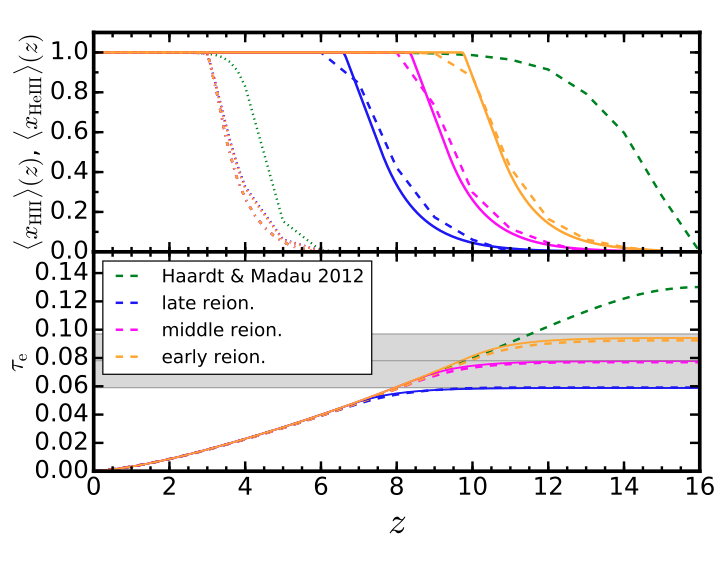Lyman-alpha Forest
Nyx is used to model Lyman-alpha forest in quasar spectra.

The Lyman-alpha forest arises primarily from four physical effects we model in Nyx: the gravitational collapse of baryons and dark matter, ideal gas pressure support, radiative heating and cooling, and photoionization.
Image shows a slice of the baryon density, temperature, neutral Hydrogen number density, and flux from the Nyx simulation in 20 Mpc/h box with 20483 particles and gas cells at redshift z = 2.5. The slice covers the domain of 20 × 20 Mpc/h, with a thickness of about 100 kpc/h (i.e. 10 cells). Flux line of sight is the y-axis direction, so that broadened lines show up as vertical black streaks. We adjusted the grey-scale intensity ranges of density, temperature, and neutral hydrogen number density to roughly match the morphology of the flux, which provides a good guide to what ranges of each quantity are relevant for the Lyman-alpha forest at these high redshifts. This image is from a calculation that was performed on NERSC's Edison supercomputer under ALCC allocation.
- The Lyman α forest in optically thin hydrodynamical simulations, Z. Lukic, C. Stark, P. E. Nugent, M. White, A. A. Meiksin, & A. S. Almgren, 2015, MNRAS, 446, 3697
Ultraviolet Background

The ultraviolet background (UVB) emitted by quasars and galaxies governs the ionization and thermal state of the intergalactic medium, and regulates the formation of high-redshift galaxies. Running Nyx simulations, we found that canonical UVB rates reionize and, more importantly, spuriously heat the IGM much earlier than they should. To remedy this issue, we introduce a new methodology to generate self-consistent photoionization and photoheating rates for modeling of reionization histories in optically-thin hydrodynamical simulations.
- Self-Consistent Modeling of Reionization in Cosmological Hydrodynamical Simulations, J. Onorbe, J. Hennawi, & Z. Lukic, 2016, ApJ, in review